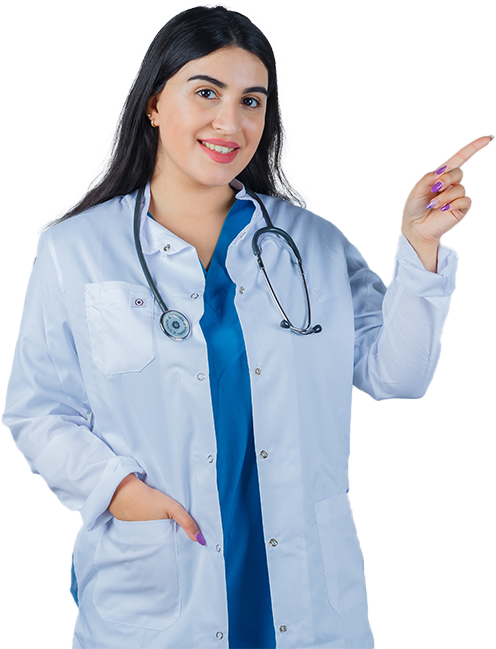
Parkinson’s Disease: Everything You Need to Know About the Neurological Disorder
Parkinson’s disease is a neurological disorder that affects the central nervous system and causes difficulty moving. Its four primary symptoms are tremors, rigidity, postural instabilities, and slowness of movement. The actual cause of Parkinson’s disease is unknown, but some cases are inherited.
It ranks second among age-related degenerative brain diseases and usually affects people over age 60. It is slightly more common in males.
There is no permanent cure for this disease, but medications can help manage its symptoms.
How Does it Affect the Body?
Parkinson’s disease affects a specific area of the brain and causes deterioration. When the area starts deteriorating, the person loses the areas once controlled. This disease prevents the brain neurons from producing dopamine, one of the most important neurotransmitters.
Due to a lack of dopamine, your brain can’t send activation signals to muscles to move and causing the slow movement. As the disease progresses, the symptoms affect the brain functions and cause dementia like symptoms and depression.
What Causes Parkinson’s Disease?
Below are several causes of Parkinson’s disease:
- Genes: Precise genetic alterations can lead to Parkinson’s disease if numerous family members have Parkinson’s disease.
- Environmental triggers: Exposure to certain toxins or environmental factors.
- Lewy bodies: Microscopical indicators of Parkinson’s disease include clumps of particular chemicals within brain cells, known as Lewy bodies, that can cause Parkinson’s disease.
- Alpha-synuclein found within Lewy bodies: Alpha-synuclein is a primary protein component of Lewy bodies, which are characteristic of Parkinson’s disease. Misfolded alpha-synuclein aggregates in these Lewy bodies disrupt the normal neuron function.
- Altered Mitochondria: Mitochondria create most of the body’s energy, and any changes to them can cause cell damage, which leads to Parkinson’s disease.
What are the Common Symptoms of Parkinson’s Disease?
Every individual has different symptoms for Parkinson’s disease. Early symptoms can be mild, which is generally avoidable. Common symptoms include:
- Tremor: Generally, the hand or fingers are the first part of the body to shake. You could wiggle your thumb and forefinger, known as “pill-rolling tremor”. Even when at rest, your hand could shake.
- Slow motion: It may cause movement to slow down over time, making routine actions challenging and time-consuming.
- Rigid muscles: Due to stiff muscles, your range of motion may be restricted and made painful.
- Poor balance and posture: You may have balance problems, and your posture can also be stooped.
- Reduction in automatic movement: It is difficult to make gestures like smiling, blinking, or swinging your arms while walking.
- Unusual soft speaking: You may speak softly or quickly because of reduced muscle control in the throat and chest.
- Writing changes: You may have trouble writing because of muscle control problems.
- Non-motor symptoms: They include anxiety, depression, sleep problems, constipation, memory problems, and tiredness.
How is it Diagnosed?
Several diagnostic tests are conducted to check for Parkinson’s disease:
- Blood tests
- CT scan
- MRI
- Genetic testing
- PET scan
Parkinson’s Disease Treatment
Parkinson’s is not curable, but with different approaches, it can be managed. The treatments can vary from person to person.
Medications
Medications help in:
- Increasing the dopamine levels of the brain
- Influencing more brain chemicals, such as neurotransmitters
- Reducing the symptoms of immobility
For the treatment of Parkinson’s symptoms, the doctor may recommend medications, such as:
- Dopamine agonists increase the brain’s dopamine production
- Enzyme inhibitors such as MAO-B inhibitors and COMT inhibitors
- Amantadine to lessen uncontrollable movements
- Anticholinergic medications to lessen muscular rigidity and tremors
Surgery
Deep brain stimulation is advised if patients do not respond well to medication. This procedure involves putting electrodes within the brain. The electrodes are connected to a generator placed in the chest near the collarbone, which sends electrical pulses to the brain. It can help in reducing the symptoms.
It can be helpful to improve severe tremors and control involuntary muscle movements.
Other treatments that could aid with Parkinson’s symptoms management include:
- Physical, occupational, and speech treatments
- A balanced diet
- Exercises
- Massage and yoga
Parkinson’s Dementia
A side effect of Parkinson’s disease is Parkinson’s dementia. Its signs and symptoms include:
- Changes in energy level
- Slurred speech
- Delusions
- Confusion
- Hallucinations
- Changes in appetite
- Depression
- Sleep disturbances
Its risk factors include:
- Severe Parkinson’s disease symptoms
- Gender
- Age
- Cognitive impairment
Helpful – Neurosurgery Cost in India
Why Patients Choose India?
India has developed itself as one of the top medical tourism destinations for neurological disorders, especially Parkinson’s disease. Patients can benefit from some of the best neurology hospitals in India, staffed with the best neurologists in India, who are available 24*7 for handling complex cases.
Moreover, patients can save up to 50 to 60% on medical treatments in India without compromising the quality. Parkinson’s disease treatment cost in India is much affordable as compared to other Western nations, such as the US and the UK. These are some of the top reasons patients generally prefer India for the treatment.
Bottom Line
Parkinson’s disease can be frustrating as walking, talking, eating, and even daily tasks become more challenging and time-consuming. Thanks to advanced treatments, the symptoms are manageable. The recovery time depends on the type of treatments and severity of the condition.
Speak with your doctor if you have Parkinson’s symptoms or have been diagnosed with the disorder and are looking for alternative treatment options. The best thing is to follow the guidance your healthcare provider suggests to take care of yourself.











